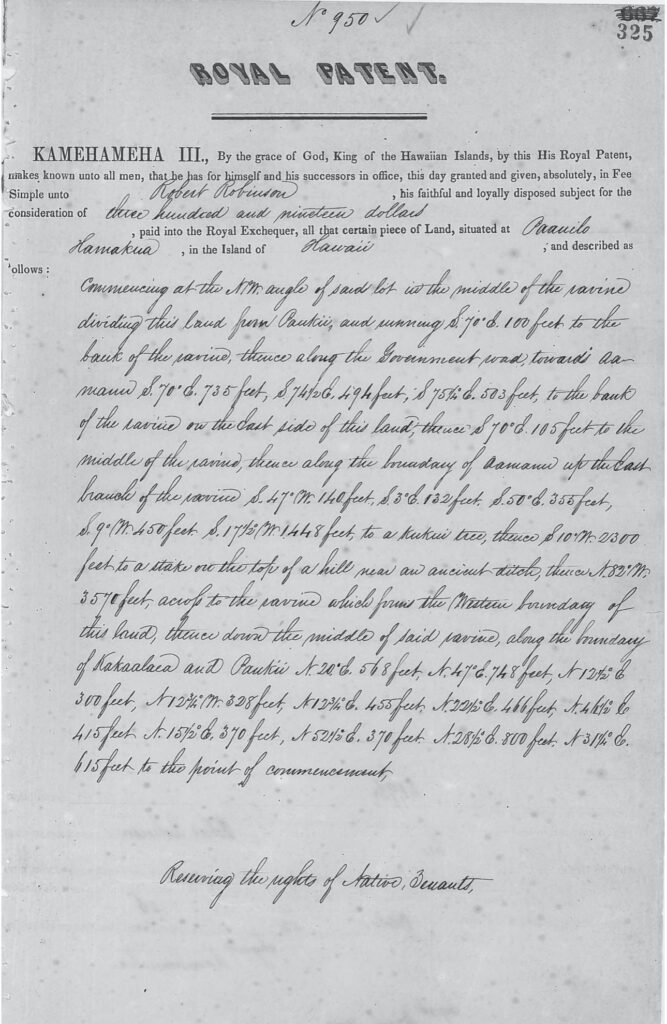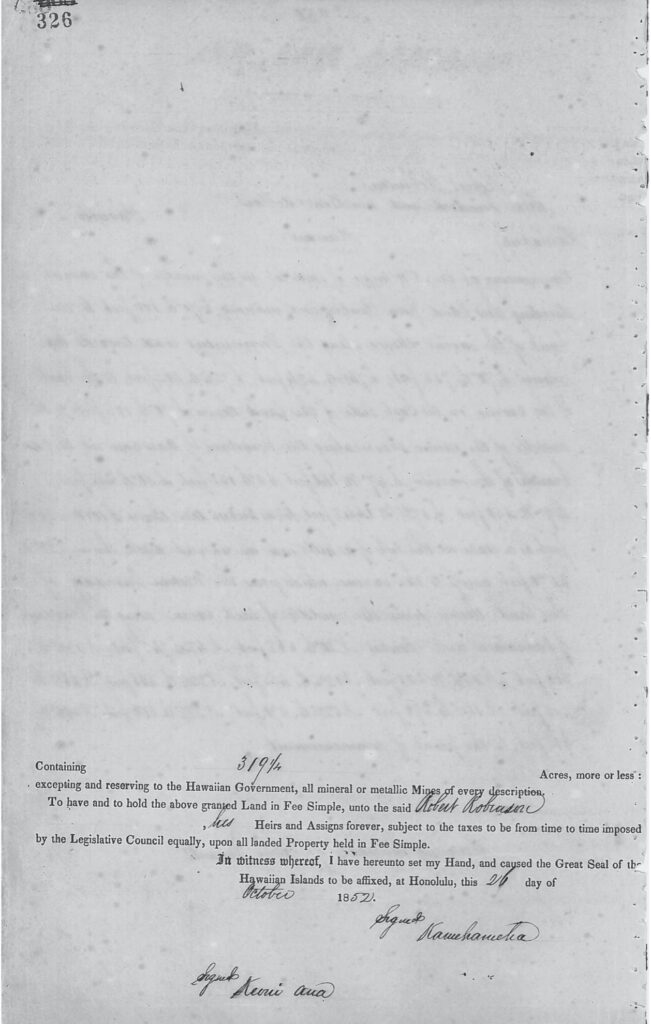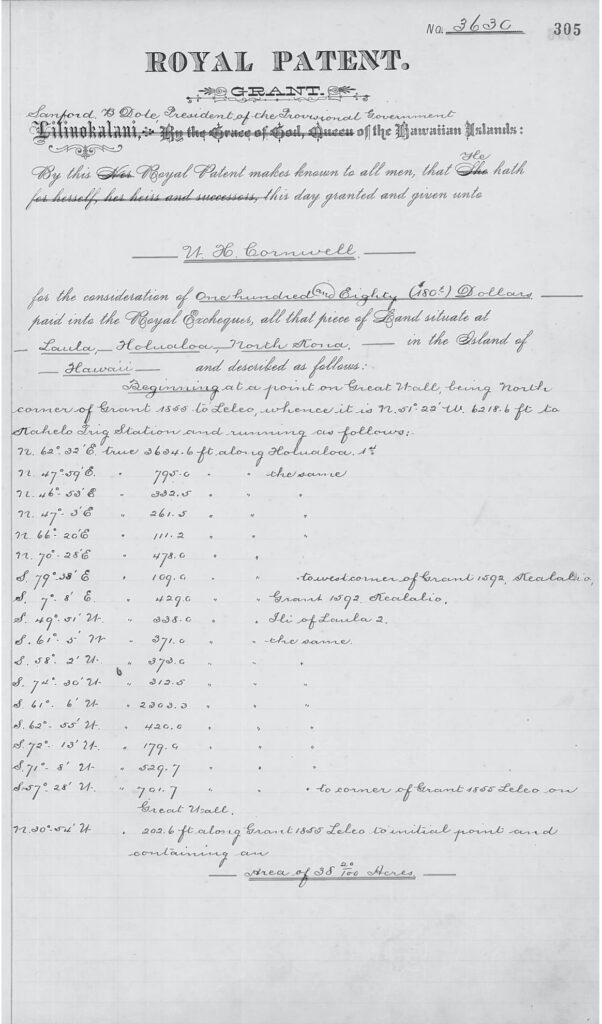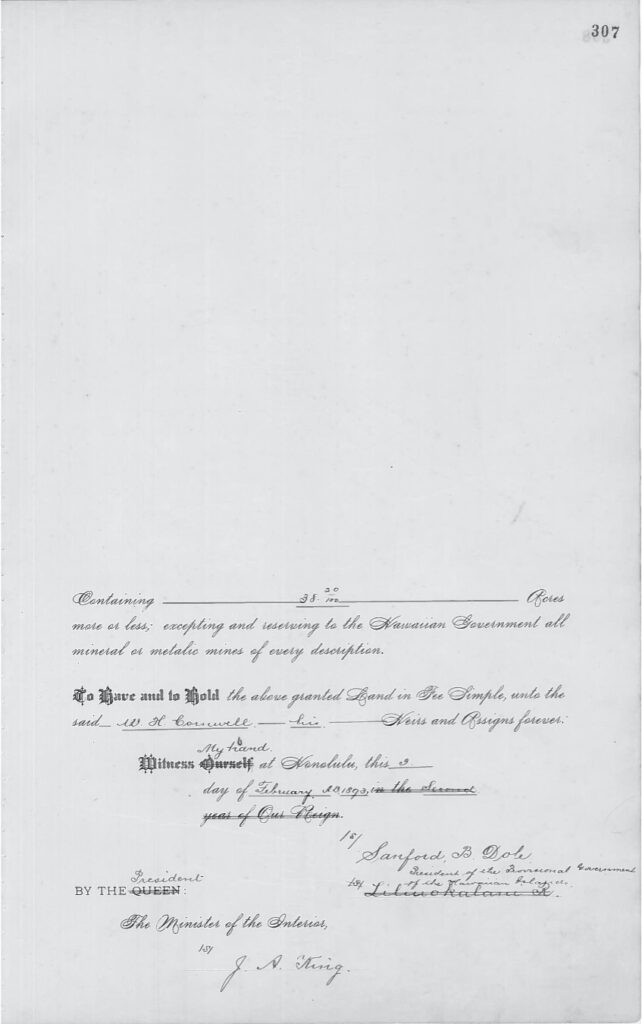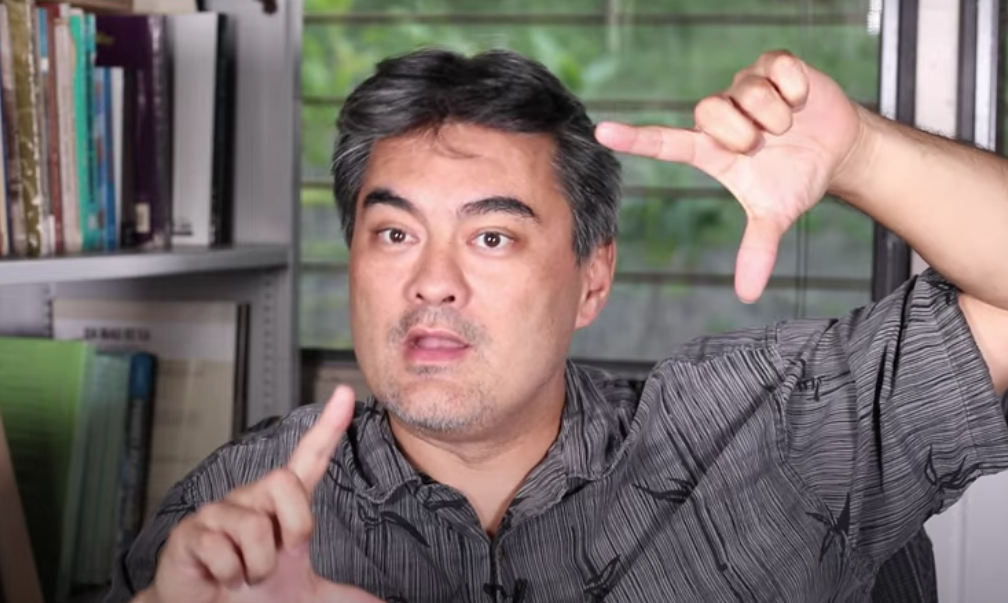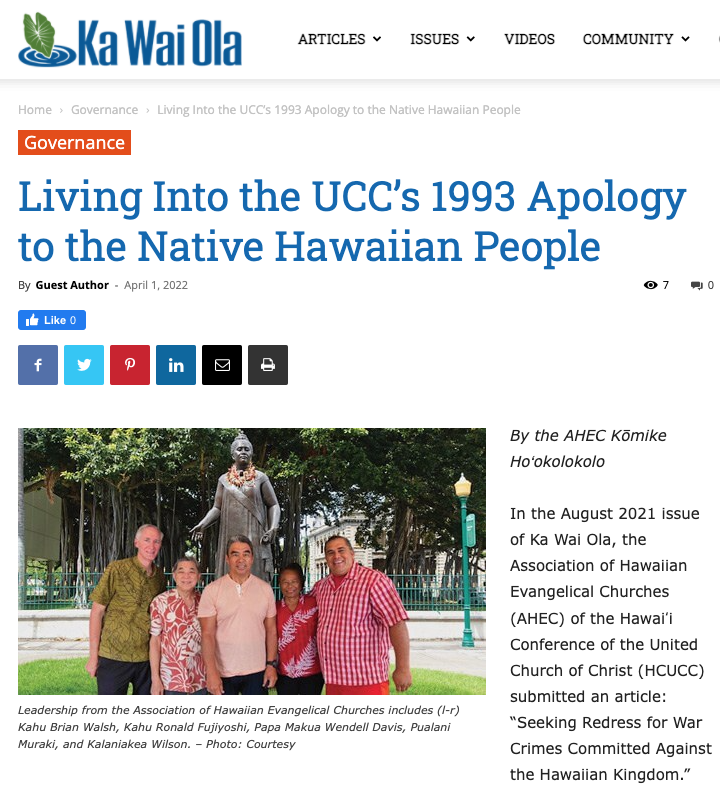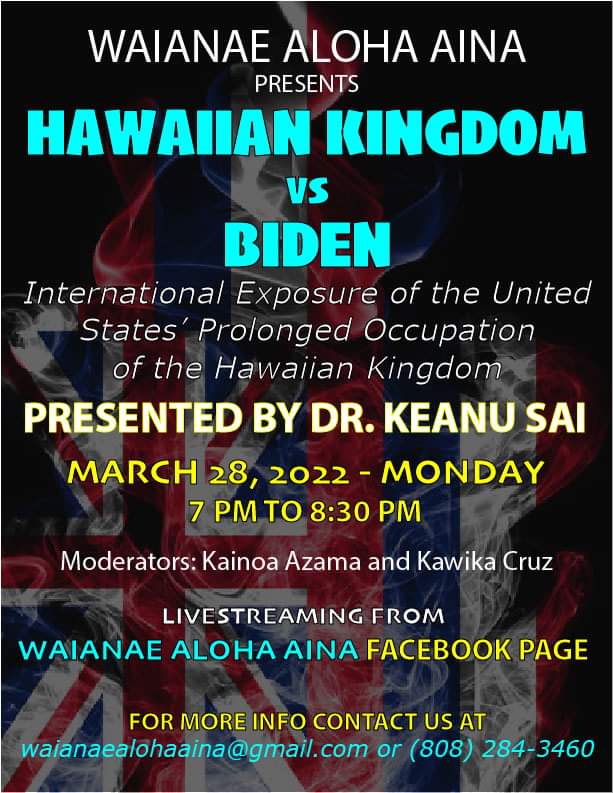Since these proceedings were initiated 11 months ago with the filing of the initial complaint on May 20, 2021, Hawaiian Kingdom v. Biden, and then the filing of the amended complaint on August 11, 2021, there was always the “800-pound gorilla in the room” that the Court did not want to directly address until last week.
That gorilla was the continued existence of the Hawaiian Kingdom as a sovereign and independent State despite the unlawful overthrow of the Hawaiian government by the United States on January 17, 1893, and being belligerently occupied by the United States for over a century. If the gorilla exists, the Court can only exist as an Article II Court under international law operating in an occupied country. If the gorilla doesn’t exist, then the Court continues to exist as an Article III Court under United States law.
The amicus brief filed by the International Association of Democratic Lawyers, the National Lawyers Guild, and the Water Protectors Legal Collective explained why the Court’s present status as an Article III Court is unlawful because it is situated within the territory of the Hawaiian Kingdom and not the United States. As such, it must transform itself into an Article II Occupation Court.
Neither Magistrate Judge Rom Trader nor District Judge Leslie Kobayashi directly addressed the 800-pound gorilla until Judge Kobayashi issued the first Order on March 30, 2022, partially granting a motion to dismiss filed by Nervell, as the Swedish Honorary Consul to Hawai‘i. In her Order Judge Kobayashi stated:
Plaintiff argues that “[b]efore the Court can address the substance of [Nervell’s] motion to dismiss it must first transform itself into an Article II Court…” Plaintiff bases this argument on the proposition that the Hawaiian Kingdom is a sovereign and independent state. This district has uniformly rejected such a proposition. “‘[T]here is no factual (or legal basis) for concluding that the [Hawaiian] Kingdom exists as a state in accordance with recognized attributes of a state’s sovereign nature.’” Plaintiff’s request for the Court to “transform itself into an Article II Court” is therefore denied.
The Court admits that it could “transform itself into an Article II Court” but for “concluding that the [Hawaiian] Kingdom” does not exist as a State it could not. Conversely, if the Hawaiian Kingdom continues to exist as a State, the Court will then “transform itself into an Article II Court.”
The Court later noted that “Plaintiff asserts its claim against Nervell in his official capacity as Honorary Consul of Sweden to Hawai‘i. Nervell argues that, because Plaintiff’s claim is against him in his official capacity, the Court does not possess jurisdiction over him, pursuant to the Vienna Convention. The Court agrees.” The Hawaiian Kingdom at no time in these proceedings denied Sweden’s appointment of Defendant Nervell as the Honorary Consul of Sweden to Hawai‘i. Rather, the Hawaiian Kingdom’s position was that Defendant Nervell held an inchoate title as Honorary Consul because he did not receive his exequatur from the Hawaiian Foreign Ministry by virtue of Article XII of the 1852 Hawaiian-Swedish Treaty. Without accreditation by the Hawaiian Kingdom, Defendant Nervell cannot claim any “official capacity” under the Vienna Convention. Also, Defendant Nervell never provided evidence that the 1852 Hawaiian-Swedish Treaty was replaced by the 1793 United States-Swedish Treaty.
On March 31, 2022, the Court issued its second Order Denying Plaintiff’s Motion for Judicial Notice. The basis of the denial was the same in its previous Order that “‘there is no factual (or legal) basis for concluding that the [Hawaiian] Kingdom exists as a state in accordance with recognized attributes of a state’s sovereign nature,” and, therefore, “the Ninth Circuit, this district court, and Hawai‘i state courts have all held that the laws of the United States and the State of Hawai‘i apply to all individuals in this State.”
Conversely, if the Hawaiian Kingdom continues to exist as a State, all “laws of the United States and the State of Hawai‘i” do not apply within the territory of the Hawaiian Kingdom. Judge Kobayashi initiated a legal dialogue with the 800-pound gorilla—the Hawaiian Kingdom.
The two Orders are not final, and according to the Federal Rules of Civil Procedure, the Hawaiian Kingdom, as the gorilla in this case, is given an opportunity to respond to the position taken by Judge Kobayashi that the gorilla doesn’t exist.
Last night, April 7, 2022, the Hawaiian Kingdom filed a Motion for Reconsideration that explained why both Orders violate international law and the American doctrine of separation of powers.
In both Orders, Judge Kobayashi, by a general verdict, denies the existence of the Hawaiian Kingdom as a sovereign and independent State. She cites U.S. Bank Tr., N.A. v. Fonoti, but provided no evidence or reasoning of the Court’s rejection of the continuity of the Hawaiian Kingdom as a State. The Fonoti decision directly cites a State of Hawai‘i case—State v. French, where the State of Hawai‘i appeals court stated, “this particular kind of claim was rejected in State v. Lorenzo, which held that presently there ‘is no factual (or legal) basis for concluding that the [Hawaiian] Kingdom exists as a state in accordance with recognized attributes of a state’s sovereign nature.”
But Judge Kobayashi’s Order omitted the word “presently” that precedes “there is no factual (or legal basis) for concluding that the Hawaiian Kingdom exists as a state.” This would be misleading because it would appear that the Order was conclusive by merely leaving the word “presently” out of the Order. In State of Hawai‘i v. Lorenzo, the appellate court explained its use of the word “presently,” because “it was incumbent on Defendant to present evidence supporting his claim,” and that “Lorenzo has presented no factual (or legal) basis for concluding that the Kingdom exists as a state in accordance with recognized attributes of a state’s sovereign nature.”
In other words, the reason why the Lorenzo Court used “presently” was because Lorenzo did not “present evidence supporting his claim.” The Lorenzo court did not foreclose the question but rather provided, what it saw at the time, instruction for the Court to arrive at the conclusion that the Hawaiian Kingdom continues to exist as a State based on evidence provided to the Court. The Lorenzo Court placed the burden of proof that the Hawaiian Kingdom continues to exist on the Defendant. The Lorenzo Court, however, acknowledged that its “rationale is open to question in light of international law.”
Because international law provides for the presumption of the continuity of the State despite the overthrow of its government by another State, it shifts the burden of proof. According to Judge Crawford, “there is a presumption that the State continues to exist, with its rights and obligations despite a period in which there no effective government.” He also stated that “belligerent occupation does not affect the continuity of the State, even where there exists no government claiming to represent the occupied State.” In other words, the Hawaiian Kingdom would continue to exist as a State despite the American military overthrow of the Hawaiian government on January 17, 1893.
According to Professor Craven, “If one were to speak about a presumption of continuity, one would suppose that an obligation would lie upon the party opposing that continuity to establish the facts substantiating its rebuttal. The continuity of the Hawaiian Kingdom, in other words, may be refuted only by reference to a valid demonstration of legal title, or sovereignty, on the part of the United States, absent of which the presumption remains.”
The “presumption of continuity of a State” is similar to the “presumption of innocence.” A person on trial does not have the burden to prove their innocence. Rather, the prosecutor has to prove beyond all reasonable doubt the guilt of the person. Without proof of guilt, the person remains innocent. In international law, a recognized sovereign and independent State does not have the burden to prove it continues be a State after being belligerently occupied for over a century. Rather, the opposing State has to prove with evidence under international law that the State was extinguished. Absent the evidence, the State continues to exist.
Therefore, the Lorenzo Court’s placing of the burden on the Defendant is misplaced because international law places the burden “on the party opposing that continuity to establish the facts substantiating its rebuttal.” The only fact the Defendant would need to provide is evidence that the United States recognized the Hawaiian Kingdom as a State, which would be the 1849 Treaty of Friendship, Commerce and Navigation. Judge Kobayashi provided no rebuttable evidence of facts in its Orders that the Hawaiian Kingdom was extinguished in accordance with international law. She just stated, without evidence, there is no 800-pound gorilla, but yet she’s in dialogue with that gorilla.
In these proceedings, the Hawaiian Kingdom provided factual evidence of the Hawaiian Kingdom’s continued existence where the Permanent Court Arbitration, in Larsen v. Hawaiian Kingdom (1999-2001), acknowledged the continued existence of the Hawaiian Kingdom as a State.
Additional factual basis of “continuity” includes the delivering of an oral statement to the United Nations Human Rights Council on March 22, 2022, by Dr. David Keanu Sai, as Minister of Foreign Affairs ad interim. Dr. Sai was accredited by the Office of the United Nations High Commissioner for Human Rights for his statement. Dr. Sai stated to the Human Rights Council, in Geneva, Switzerland:
The International Association of Democratic Lawyers and the American Association of Jurists call the attention of the Council to human rights violations in the Hawaiian Islands. My name is Dr. David Keanu Sai, and I am the Minister of Foreign Affairs ad interim for the Hawaiian Kingdom. I also served as lead agent for the Hawaiian Kingdom at the Permanent Court of Arbitration from 1999-2001 where the Court acknowledged the continued existence of my country as a sovereign and independent State.
The Hawaiian Kingdom was invaded by the United States on 16 January 1893, which began its century long occupation to serve its military interests. Currently, there are 118 military sites throughout the islands and the city of Honolulu serves as the headquarters for the Indo-Pacific Combatant Command.
For the past century, the United States has and continues to commit the war crime of usurpation of sovereignty, under customary international law, by imposing its municipal laws over Hawaiian territory, which has denied Hawaiian subjects their right of internal self-determination by prohibiting them to freely access their own laws and administrative policies, which has led to the violations of their human rights, starting with the right to health, education and to choose their political leadership.
The United States, who is a member State of the Human Rights Council, did not object to Dr. Sai’s statement that “the United States has and continues to commit the war crime of usurpation of sovereignty, under customary international law, by imposing its municipal laws over Hawaiian territory,” thereby, acquiescing to the Hawaiian Kingdom’s continued existence as a State and the United States commission of the war crime of usurpation of sovereignty.
According to the International Court of Justice, in the Case concerning the Temple of Preah Vihear (Cambodia v. Thailand), acquiescence “concerns a consent tacitly conveyed by a State, unilaterally, through silence or inaction, in circumstance such that a response expressing disagreement or objection in relation to the conduct of another State would be called for.” According to Professor MacGibbon, under international law, the “function of acquiescence may be equated with that of consent,” whereby the “primary purpose of acquiescence is evidential; but its value lies mainly in the fact that it serves as a form of recognition of legality and condonation of illegality and provides a criterion which is both objective and practical.”
The failure of the United States to disagree or object to the Hawaiian Kingdom being acknowledged as a State by the Permanent Court of Arbitration, and its failure to disagree or object to the statement to the Human Rights Council regarding the war crime of usurpation of sovereignty are official acts by the United States under customary international law. War crimes can only be committed in an international armed conflict between two or more States, and, therefore, the United States acquiescence are official acts that bind Judge Kobayashi. The U.S. Supreme Court, in Williams v. Suffolk Insurance Co., stated, “when the executive branch of the government, which is charged with our foreign relations assumes a fact it is conclusive on the judicial department.”
United States President John Tyler, by letter of Secretary of State John C. Calhoun on July 6, 1844, to Hawaiian officials, recognized the Hawaiian Kingdom as a sovereign and independent State. And on December 20, 1849, the United States entered into a Treaty of Friendship, Commerce and Navigation with the Hawaiian Kingdom and maintained a Legation (Embassy) in Honolulu and Consulates throughout the islands.
In its filings, the United States has not provided any rebuttable evidence, whether factual or legal, that the Hawaiian Kingdom was extinguished as a State under international law. Rather it claimed that “the United States annexed Hawaii in 1898 and Hawaii entered the union as a state in 1959.” Both the 1898 Joint Resolution of annexation and the 1959 Hawai‘i Admission Act are municipal laws and, according to the U.S. Supreme Court, in The Apollon, these laws cannot “extend beyond its territory except so far as regards its citizens. They can have no force to control the sovereignty or rights of any other nation within its own jurisdiction.”
The U.S. Supreme Court also stated, in United States v. Curtiss-Wright Export Corp., that “neither the Constitution nor the laws passed in pursuance of it have any force in foreign territory unless in respect of our own citizens, and operations of the nation in such territory must be governed by treaties, international understandings and compacts, and the principles of international law.” In 1988, the U.S. Department of Justice, in a legal opinion titled, “Legal Issues Raised by Proposed Presidential Proclamation To Extend the Territorial Sea,” it stated that “we doubt that Congress has constitutional authority to assert either sovereignty over an extended territorial sea or jurisdiction over it under international law on behalf of the United States.” The Department of Justice also concluded, “It is therefore unclear which constitutional power of Congress exercised when it acquired Hawaii by joint resolution.”
Under international law, the imposition of United States municipal laws violates the territorial integrity of the Hawaiian Kingdom and would constitute the war crime of usurpation of sovereignty under international law. According to Professor Schabas, the war crime of usurpation of sovereignty is where the “perpetrator imposed or applied legislative or administrative measures of the occupying power going beyond those required by what is necessary for military purposes of the occupation.” In these proceedings, the United States’ reliance on its municipal laws is an admission of the war crime of usurpation of sovereignty.
On the topic of separation of powers, the U.S. Supreme Court, in Airports Auth. v. Citizens for Noise Abatement, explained, “the structure of our Government as conceived by the Framers of our Constitution disperses the federal power among the three branches—the Legislative, the Executive, and the Judicial—placing both substantive and procedural limitations on each. The ultimate purpose of this separation of powers is to protect the liberty and security of the governed.” Professor Merrill explains that “because every federal office must be located ‘in’ one of the three branches, each office is subject to whatever specific constitutional limitations apply to action by its branch.”
In United States v. Curtiss-Wright Export Corp., the U.S. Supreme Court stated, “the President alone has the power to speak or listen as a representative of the nation. He makes treaties with the advice and consent of the Senate; but he alone negotiates. Into the field of negotiation the Senate cannot intrude, and Congress itself is powerless to invade it.” Like the Congress, the judicial branch “is powerless to invade” the executive branch. The judicial branch is the arbiter of facts and law. It is not charged with foreign relations.
Judge Kobayashi’s two Orders not only violate international law but also the American doctrine of the separation of powers between the three branches of government. The President cannot act as a judge and a judge cannot act as a President who is in charge of foreign relations. In other words, Judge Kobayashi’s two Orders declaring the Hawaiian Kingdom does not exist without providing any evidence is a violation of the separation of powers doctrine. She’s supposed to provide evidence that the executive branch, not the judicial branch, extinguished the Hawaiian Kingdom as a State under international law.
The Hawaiian Kingdom, as the 800-pound gorilla, has now placed the burden on Judge Kobayashi to show evidence of a factual or legal basis that it doesn’t exist. Under Rule 52(c) of the Federal Rules of Civil Procedure, the Court is required to write “findings of fact and conclusions of law” as to why the gorilla doesn’t exist or why the gorilla does exist. If the gorilla does exist, Judge Kobayashi will have to change the two Orders and transform the Court into an Article II Occupation Court that administers Hawaiian Kingdom law and the international law of occupation.


